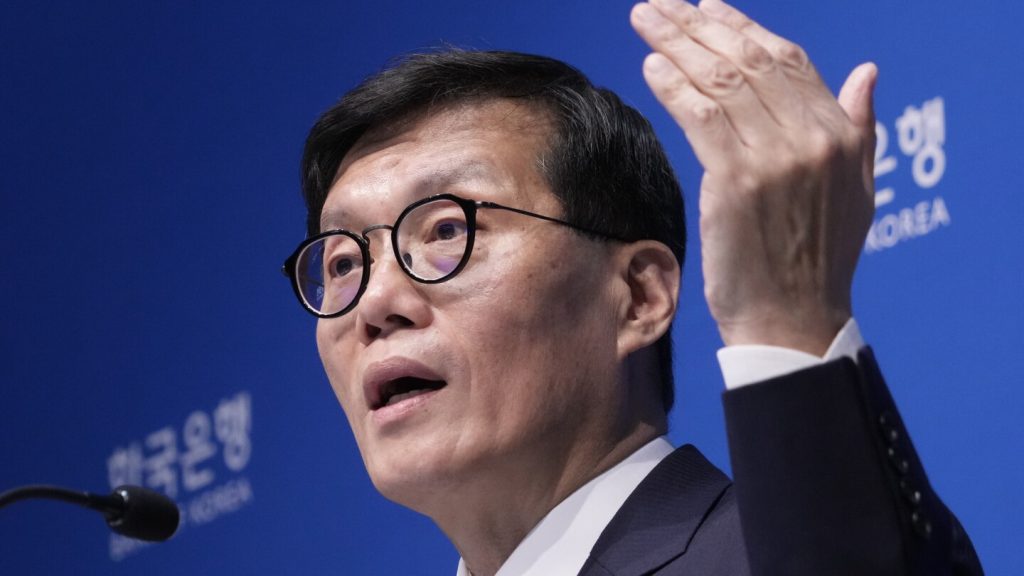South Korea’s central bank has made its first interest rate cut in over four years in an effort to stimulate the country’s sluggish economy. The Bank of Korea lowered its key interest rate by a quarter percentage point to 3.25%, citing a slow recovery in domestic demand as a factor in the decision. This move comes after a period of freezing rates and a previous rate hike in response to concerns about inflation and soaring household debt.
Despite the rate cut, central bank Governor Rhee Chang-yong emphasized that there is still capacity for further cuts, noting a slowdown in house price growth in the capital area and easing consumer price inflation. However, Rhee also cautioned that it is too early to determine if the country’s financial situation is stabilizing, hinting that the bank may take a conservative approach to additional rate cuts. This approach, referred to as a “hawkish cut,” suggests a preference for tighter monetary conditions.
The decision to lower interest rates was met with approval from government officials, who have been calling for borrowing costs to be reduced. South Korean Finance Minister Choi Sang-mok expressed support for the rate cut during a parliamentary hearing, acknowledging the need to boost economic growth in the face of increasing uncertainties, including the crisis in the Middle East. The central bank highlighted the importance of monitoring related risks, such as the impact of the lowered interest rate on household debt, as well as factors like fuel prices, exchange rates, and IT exports.
The Bank of Korea projects that South Korea’s economy will grow by 2.4% this year, a slight decrease from the previous year. While exports have shown improvement, job growth remains stagnant, particularly in industries like construction. The bank also noted that macroprudential policies aimed at maintaining financial system stability are expected to gradually slow down the growth in house prices and household debt. Despite these measures, the bank emphasized a need to monitor risks to ensure economic stability in the future.


